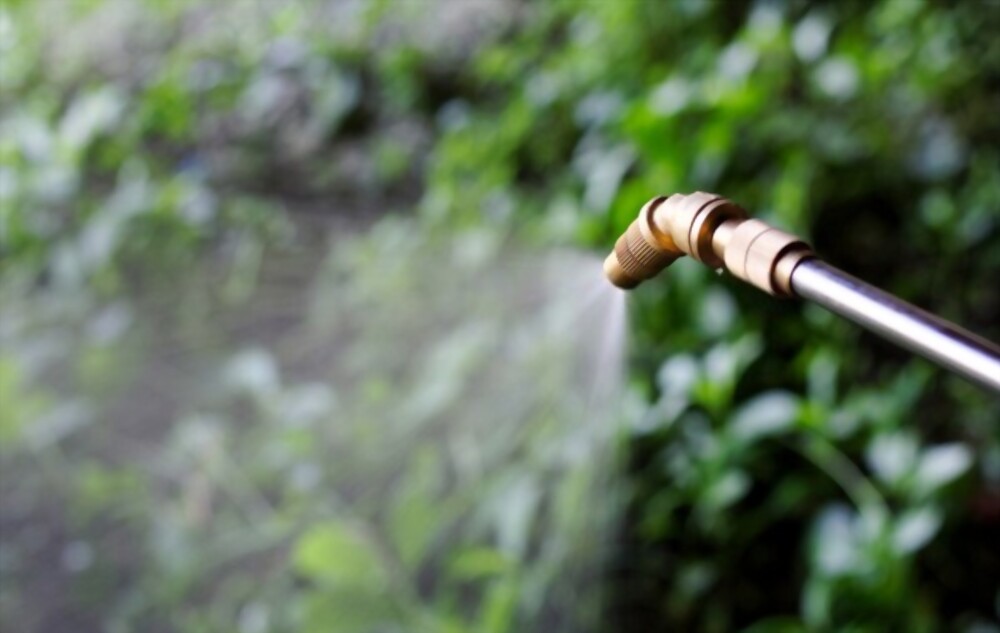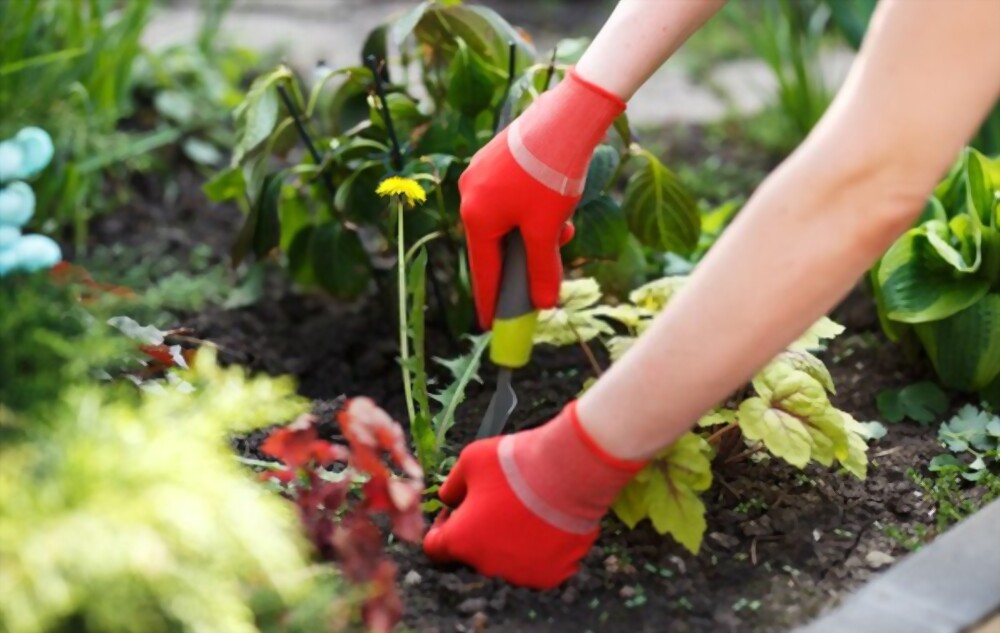Here we are in the New Year - congratulations because we all made it together! Now that we made it to the new year, it's time to think about the new things we want it to bring. For your landscaping, that probably means blooming flowerbeds.
But "hold up there, Fair team," we can almost hear you saying, "isn't it a little premature to be talking about flowers?" Of course, it's premature for planting but not preparation work like applying preemergents to flowerbeds.
The flowers aren't in your Owassa flower beds yet, but the weeds are already lying in wait!
What Are Preemergents?
We'll begin with a definition. If you're not a professional landscaper, an avid gardener, or a Fair Lawn blog superfan, there's a high probability you don't know what a preemergent is. Preemergents are a type of weed control that prevents weeds from growing before they can cause too much trouble.
We've discussed preemergents in a previous blog, but at the time, we were referring to general preemergents in lawn care. Today we'll be talking specifically about applying preemergents to flowerbeds.
When? Applying Preemergents to Flowerbeds
 So when do we apply preemergents to flower beds? The short answer to that question is…now! Now is when we start anyway, but for those who want more details and are more interested in the whys, here's your explanation.
As the name of preemergents implies, they work by targeting the weeds before they emerge. That means for them to work, we must apply them before we typically see the first weeds arrive. Rather than targetting particular weeds, applying preemergents to flower beds target everything that has yet to reach the blooming stage.
When Shouldn't We Use Preemergents?
The critically thinking perennial lovers among you may already see a potential problem. If you've planted buds in the ground, applying preemergent to flowerbeds will prevent them from blooming or "emerging," too. So, yes, there are times you would want to avoid using preemergents on flowerbeds.
If your plants are already fully grown, there's no problem with adding preemergents now. Likewise, if you plant new, fully established annuals in your garden each year, preemergents don't interfere with their life cycle since they are already past the stage of growth that they target.
What Do You Do If You Have Plants You Want to Emerge?
We've told you when applying premergents to flowerbeds is appropriate and when it isn't. But are you stuck if you fall into the latter category but still want to prevent weeds? Thankfully, the answer is that there are other ways to stop weeds.
Mulching
An effective way to prevent weeds is to make your garden as inhospitable to them as possible. When you know what weeds need to grow, you try to provide them with things they don't. But of course, if your desirable plants want the same things (which will sometimes be the case), you can't wholly avoid supporting weeds inadvertently.
However, if you keep your garden very healthy and thriving, there is less space or opportunity for weeds to grow. We do that with a thriving garden and plenty of mulch, which creates the first line of defense against weeds.
Edging
Another barrier to weeds is well-placed edging. Well-defined, deeply cut borders are more difficult for weeds to cross and will also prevent your lawn from overgrowing into your flowerbeds.
Both mulching and edging also make it more apparent when a weed has infiltrated your garden, making it easier to deal with immediately.
Post Emergents
Luckily not all weed management is weed prevention if you've unfortunately passed that stage. You can also kill weeds after they arrive! In contrast to preemergents, post-emergents are applied to weeds after they have "bloomed."
Some preemergents are sprayed directly on weeds. You must be careful with these weed killers because often they will kill anything they touch, so accidentally spraying on a flower or other desirable plant can cause its death. Some of these chemicals can also harm friendly insects and wildlife, so it's best to let the pros handle it for you.
Pulling
So when do we apply preemergents to flower beds? The short answer to that question is…now! Now is when we start anyway, but for those who want more details and are more interested in the whys, here's your explanation.
As the name of preemergents implies, they work by targeting the weeds before they emerge. That means for them to work, we must apply them before we typically see the first weeds arrive. Rather than targetting particular weeds, applying preemergents to flower beds target everything that has yet to reach the blooming stage.
When Shouldn't We Use Preemergents?
The critically thinking perennial lovers among you may already see a potential problem. If you've planted buds in the ground, applying preemergent to flowerbeds will prevent them from blooming or "emerging," too. So, yes, there are times you would want to avoid using preemergents on flowerbeds.
If your plants are already fully grown, there's no problem with adding preemergents now. Likewise, if you plant new, fully established annuals in your garden each year, preemergents don't interfere with their life cycle since they are already past the stage of growth that they target.
What Do You Do If You Have Plants You Want to Emerge?
We've told you when applying premergents to flowerbeds is appropriate and when it isn't. But are you stuck if you fall into the latter category but still want to prevent weeds? Thankfully, the answer is that there are other ways to stop weeds.
Mulching
An effective way to prevent weeds is to make your garden as inhospitable to them as possible. When you know what weeds need to grow, you try to provide them with things they don't. But of course, if your desirable plants want the same things (which will sometimes be the case), you can't wholly avoid supporting weeds inadvertently.
However, if you keep your garden very healthy and thriving, there is less space or opportunity for weeds to grow. We do that with a thriving garden and plenty of mulch, which creates the first line of defense against weeds.
Edging
Another barrier to weeds is well-placed edging. Well-defined, deeply cut borders are more difficult for weeds to cross and will also prevent your lawn from overgrowing into your flowerbeds.
Both mulching and edging also make it more apparent when a weed has infiltrated your garden, making it easier to deal with immediately.
Post Emergents
Luckily not all weed management is weed prevention if you've unfortunately passed that stage. You can also kill weeds after they arrive! In contrast to preemergents, post-emergents are applied to weeds after they have "bloomed."
Some preemergents are sprayed directly on weeds. You must be careful with these weed killers because often they will kill anything they touch, so accidentally spraying on a flower or other desirable plant can cause its death. Some of these chemicals can also harm friendly insects and wildlife, so it's best to let the pros handle it for you.
Pulling
 Then there's the manual method of weed removal. Sometimes the easiest way to remove weeds is to remove them by hand. But, again, it is always best to talk to pros because some weed seeds are more likely to spread when you pull them up by bringing them closer to the surface.
But for other weeds, especially if you only have one or two, the easiest way to remove them is to pull them out.
Want a Beautiful Garden in 2023?
If you want a beautiful landscape in 2023, applying preemergents to flowerbeds at your home can be a vital part of achieving that. Of course, like everything with landscaping, there are pros and cons and appropriate and inappropriate times to use them, but preemergents now are a great way to avoid weeds later. So, to truly know what your lawn needs, allow us to handle the dirty work for you!
Then there's the manual method of weed removal. Sometimes the easiest way to remove weeds is to remove them by hand. But, again, it is always best to talk to pros because some weed seeds are more likely to spread when you pull them up by bringing them closer to the surface.
But for other weeds, especially if you only have one or two, the easiest way to remove them is to pull them out.
Want a Beautiful Garden in 2023?
If you want a beautiful landscape in 2023, applying preemergents to flowerbeds at your home can be a vital part of achieving that. Of course, like everything with landscaping, there are pros and cons and appropriate and inappropriate times to use them, but preemergents now are a great way to avoid weeds later. So, to truly know what your lawn needs, allow us to handle the dirty work for you!
 (918) 205-9193
(918) 205-9193 info@fairoutdoordesign.com
info@fairoutdoordesign.com
